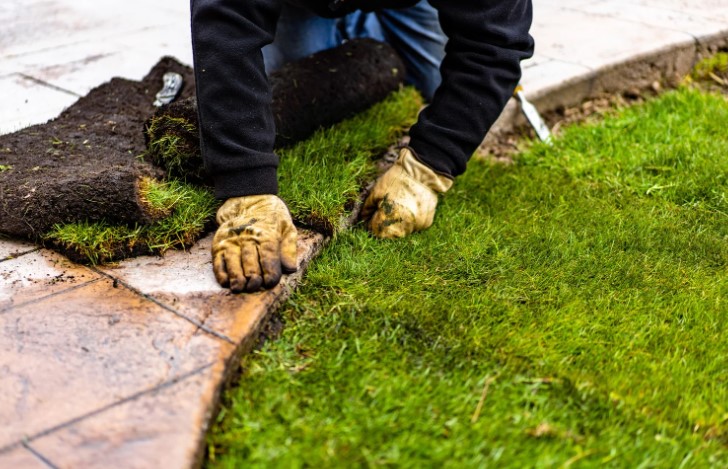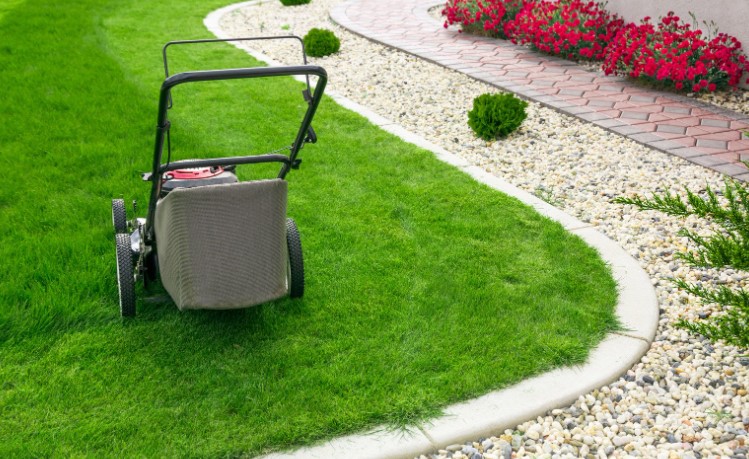- How to Scarify a Lawn? – Step-by-Step Process
- How Do I Prepare My Lawn for Scarifying?
- Should I Scarify a Wet Lawn?
- Aftercare: What should I do after Scarification?
- What are the Common Mistakes to Avoid When Scarifying a Lawn?
- Conclusion – How I Keep My Lawn in Top Shape?
- FAQs – Everything Else You Might Be Wondering
A healthy, green lawn isn’t just about mowing or watering. Over the years, I’ve realised that scarifying — the act of removing built-up moss, thatch, and dead grass — is one of the most important but overlooked lawn care tasks in the UK.
It helps the grass breathe, improves nutrient uptake, and encourages thicker regrowth.
If you’re wondering how to scarify a lawn, this guide walks you through everything I’ve learned — from timing and preparation to tools and recovery.
When Should I Scarify My Lawn in the UK?
The best times to scarify in the UK are spring (March to May) and autumn (September to early October). These seasons offer the right balance of warmth and moisture to help your lawn recover after scarifying.
In spring, I aim for light scarification to remove surface moss and give the lawn a boost. In autumn, I go deeper to tackle thatch that built up over summer.
I avoid summer and winter, when extreme conditions can stress or damage the lawn.

How to Scarify a Lawn? – Step-by-Step Process
Here’s the exact process I follow when scarifying my garden lawn in the UK:
Step 1 – Assess Your Lawn
Before I begin, I take a close look at the lawn. If the grass feels spongy underfoot, drains poorly, or has visible moss, it’s a sign thatch is building up and it’s time to scarify.
Step 2 – Mow Your Lawn Short
I always mow the lawn a few days before scarifying, cutting it shorter than usual but not scalping it. This makes the scarifier to reach the thatch easier and soon
Step 3 – Choose Your Scarifying Tool
Depending on the size of your garden and how thick the thatch is, you can choose from a few different tools. I’ve used both manual and powered options.
| Tool Type | Best For | Pros | Cons |
| Spring Tine Rake | Small lawns, gentle use | Cheap, easy to control | Labour-intensive |
| Electric Scarifier | Medium lawns | Efficient, time-saving | Needs power source |
| Petrol Scarifier | Large, thatchy lawns | Powerful, no cables | Noisy, more maintenance |
For smaller areas, I sometimes stick with a spring tine rake, especially if I’m only doing light work. But for deeper jobs, I prefer an electric scarifier — it makes the job much faster and more effective.
Step 4 – Scarify in Two Directions
To get the best result, I scarify horizontally first, then vertically. This crosshatch pattern helps me lift as much thatch and moss as possible.
I adjust the height setting so it pulls up debris without ripping out healthy grass.
Step 5 – Rake Up the Debris
Scarifying creates a lot of waste. I always rake it up and collect the debris for composting or disposal. Leaving it on the lawn can suffocate the new grass which are trying to grow.
Step 6 – Overseed and Fertilise
If scarifying leaves bare patches, I overseed the area and apply a lawn feed to speed up recovery. I find this gives the lawn a real boost and helps fill in gaps faster.
What Tools Do I Need to Scarify My Lawn?
Selecting the right tool can make a big difference. I use this quick reference when deciding what’s best for the job:
| Tool Type | Best For | Pros | Cons |
| Spring Tine Rake | Beginners, small gardens | Simple, low cost | Hard work, slower process |
| Electric Scarifier | Medium lawns | Quick, efficient | Needs electricity nearby |
| Petrol Scarifier | Large or neglected lawns | More power, cordless | Heavier, louder |
If you’re just beginning out or have a minimal garden, a manual rake might be all you need. But for regular use or bigger lawns, I’d recommend investing in an electric or petrol scarifier.
How Do I Prepare My Lawn for Scarifying?
Preparation is everything. Before I scarify, I make sure to:
- Mow the lawn short a few days ahead
- Water the lawn lightly (if the soil is too dry) to soften the thatch
- Treat moss, if needed, with a moss killer a couple of weeks beforehand
This makes the scarification smoother and more effective.

Should I Scarify a Wet Lawn?
One mistake I made early on was scarifying when the ground was too wet. It made a mess and damaged the grass roots.
Now, I check that the soil is slightly moist but not soggy. A dry, compacted lawn is just as bad — the scarifier won’t dig in properly.
My test? I press a garden fork into the soil. If it goes in with slight resistance, the moisture is just right.
Aftercare: What should I do after Scarification?
After I’ve scarified, I will take care of the lawn gently for a couple of weeks.
- I overseed bare patches with a high-quality seed blend.
- I apply a fertiliser that’s rich in phosphorus to help roots re-establish.
- I keep the lawn watered, especially if there’s no rain forecast.
- I avoid heavy foot traffic while the lawn is recovering.
If I’ve done the job in spring, recovery usually takes about 2–3 weeks. If I scarify in autumn, it might take a little longer depending on temperatures and daylight hours.
What are the Common Mistakes to Avoid When Scarifying a Lawn?
Here are a few mistakes I’ve made — and learned to avoid:
- Scarifying too early in the season, before the grass starts growing.
- Going too deep and damaging the healthy roots.
- Not collecting debris, which can suffocate the grass.
- Skipping overseeding, which slows recovery and invites weeds in lawn.
- Scarifying new lawns less than a year old — the roots aren’t strong enough.
Conclusion – How I Keep My Lawn in Top Shape?
Scarifying might look drastic, but it’s one of the best things I’ve done for my lawn.
By learning how to scarify a lawn properly, choosing the right time, using the right tools, and following through with aftercare, I’ve transformed patchy, mossy grass into a thick, green lawn.
If you’re tackling your lawn this season, here’s my quick recap:
- Scarify in spring or autumn
- Mow short and prepare the soil
- Choose the right scarifying tool
- Remove all debris after scarifying
- Overseed and feed for faster recovery
Done right, scarifying breathes new life into your lawn — and once you see the results, you’ll wonder why you didn’t start sooner.

FAQs – Everything Else You Might Be Wondering
1. Can I scarify a new lawn?
No — I always wait at least 12 months before scarifying a newly seeded or turfed lawn to allow the roots to establish.
2. What happens if I scarify too often?
Over-scarifying weakens the grass and leads to bare patches. I stick to once a year, or twice at most if moss is a big problem.
3. Do I need to aerate after scarifying?
Not always. If the lawn is compacted, I might use a garden fork or hollow tine aerator. But scarifying itself doesn’t replace aeration.
4. Can I rent a scarifier instead of buying one?
Yes — many garden centres and hire shops in the UK rent them out. I started that way before eventually buying my own electric scarifier.


0 Comments